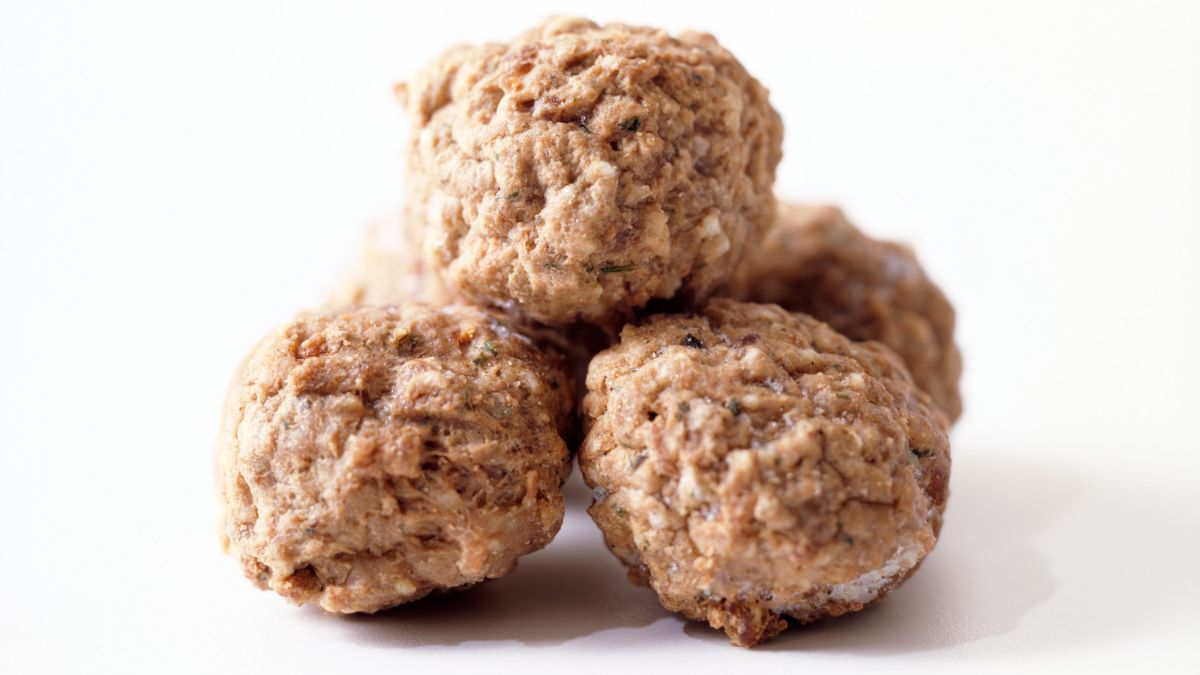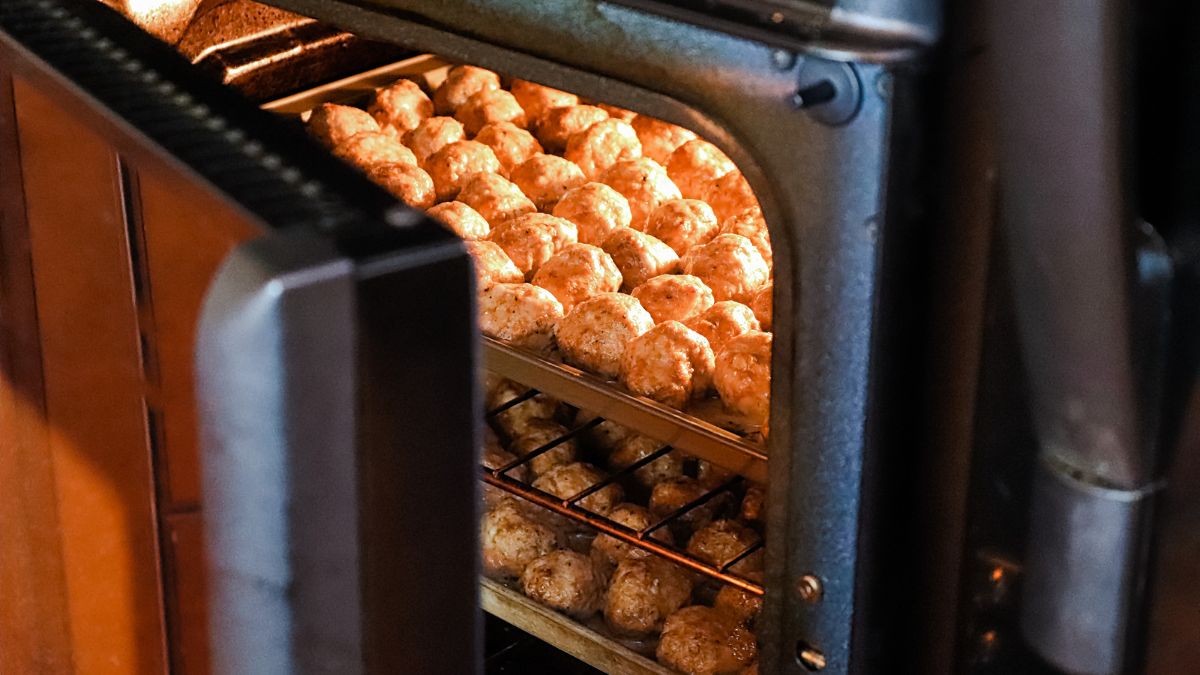How to Defrost Meatballs? 6 Methods Explained

Meatballs are not only simple to make, but they are also insanely delicious and very versatile. However, these tasty balls of meat sometimes need to be stored, as you may get greedy making them without realizing that there are only so many you can eat. The best way to store meatballs is to freeze them, but frozen food doesn’t always return to its finest when fresh, and meatballs are no exception. So how to defrost meatballs?
Resting is the key to successfully defrosted meatballs. You can use several to defrost meatballs, but resting is always an integral step to whichever method you use. You can defrost meatballs using any heating kitchen appliance you have. However, the one you use depends on why you defrost your meatballs.
Defrosting meatballs and cooking them afterward is very simple, but you need to know a few things to do it well. In the following paragraphs, I will explain and describe each defrosting method you can apply and when to use which.
How to Defrost Meatballs?
Defrosting meatballs is a pretty simple procedure consisting of a few steps. The most important step is to let your meatballs rest before you use any appliance to defrost them further.
Resting
Resting is the crucial step in defrosting meatballs. It allows the meatballs to transition peacefully from the frozen to the defrosted stage. Changing the food’s temperature abruptly creates a shock in the food molecules, causing them to either break the bonds and fall apart or stiffen and become impossible to revert to their former state, as they were before freezing them.
Resting is the bridge connecting the frozen and defrosted stages of the meatballs and is, therefore, very important to observe and apply.
So, before using any of the defrosting methods, except for the fridge, let the meatballs rest for about 10-15 minutes at room temperature.
The Fridge
Letting your frozen meatballs defrost in the fridge takes up most time compared to the other two methods. However, it is the simplest and the safest one. All you need to do is to take your meatballs out of the freezer and place them in the fridge.
With this method, you are placing them from freezing to not as cold, allowing them to defrost gradually without getting soggy. Make sure you place the meatball container on a kitchen towel in the fridge so that the excess water from the ice doesn’t make your other food wet.
Defrosting your frozen meatballs in the fridge usually takes up about 10-12 hours, so this method works best if you plan to have them the next day.
The Counter
Defrosting your frozen meatballs at room temperature is quicker than the fridge, but you mustn’t forget them, as they will spoil. Place the frozen meatball container on a kitchen towel to avoid getting your counter wet, and leave them there for about two hours.
Your meatballs will start defrosting on the outside, getting softer, while still having a frozen center. If you wait until they defrost through the middle, you risk spoiling them. Therefore, when you see they are soft on the outside, pop them in the appliance you choose.

Lukewarm Water
You can also let your frozen meatballs defrost in lukewarm water. This is the quickest method to defrost your meatballs without using an appliance; however, here, you need to be very careful, as the lightest increase in the water temperature could make the meatballs start cooking.
Therefore, be absolutely sure that the water is lukewarm, and don’t place the meatballs directly in the water, but instead, wrapped up in plastic foil.
The Oven
The oven is a great appliance to use to thoroughly defrost your frozen meatballs. Set the temperature to 375 °F, i.e., 190 °C, and let the oven preheat for ten minutes.
Place your meatballs, uncovered, on a baking tray and let them defrost in the oven for about ten minutes. Defrosted this way, your meatballs are perfect for further baking alone or for combining with potatoes, rice, or mixed vegetables.
The oven will dehydrate them just enough to keep their consistency and prevent them from getting soggy when you cook them.
The Microwave
If you defrost your meatballs in the microwave, you set them off for a nice pasta sauce or another type of meatball-enhanced sauce. The microwave will add some moisture which you can harness nicely by using your meatballs as a part of another juicy meal.
Don’t fry your microwave-defrosted meatballs, as they will turn out overly soggy and moist. However, the grill is a great place to cook your microwave-defrosted meatballs, turning them into patties.
Place your rested meatballs into the microwave and cover them with a paper or cotton kitchen towel so that they don’t get too moist and soggy. Set the timer to one minute and let them defrost.
Once the minute is over, check to see if they have deforested all the way through. If they are ready, throw them on the stove and cook them; if they aren’t, set the microwave timer at 10 seconds for each subsequent cycle.

The Air-fryer
The air-fryer is probably the best way to defrost frozen meatballs, as they turn out neither overly dry nor overly moist. Therefore, you can use them fried, as a sauce addition, baked, or grilled.
Place the meatballs on baking paper in the air-fryer or spray the tray with cooking oil. Set the air-fryer timer for two minutes at 325 °F, i.e., 150 °C. Don’t go over two minutes unless you want your meatballs to be partially or completely cooked.
What Is the Quickest Way to Defrost Meatballs?
The quickest way to defrost meatballs is the microwave, which shouldn’t take more than one or two minutes. However, exposing the meatballs to drastic temperature changes, even after you have let them rest, can significantly and adversely affect their structure, making them overly moist or overly dry.
The second quickest method is to use the air-fryer, which I recommend more than the microwave.
The best way to defrost meatballs is by using the fridge. It is the safest and most effective manner to defrost your meatballs and bring them to a stage closest to their original state. It does take up the most time, but the gradual increase in the temperature impacts the meatballs very little, if at all.
Therefore, if you want to have meatballs for your next meal, plan ahead so that you have enough time to defrost them in the fridge, as the most effective way.
Can You Cook Meatballs Straight From Frozen?
You can cook meatballs straight from frozen, but that is not the way I would recommend. If you take your stiff-frozen meatballs out of the freezer and pop them right into the oven, pot, air-fryer, or whichever other appliance you choose, they won’t come out as juicy and tender as they normally would.
When cooking meatballs straight from frozen, one of two things will happen. They will lose their structure and become runny if you cook them at a moderate temperature. This happens because the frozen water molecules that are created during the freezing process will melt and get reabsorbed into the meat.
Therefore, you will end up with somewhat boiled meatballs, even if you use the oven. If you use the pan, it will stick to the bottom, falling apart. If you use the air-fryer or another self-cooking appliance, they will become overly soft and won’t taste as good.
Conversely, cooking meatballs straight from frozen at high temperatures will dry them out, making them hard and even slightly burnt. Therefore the resting process is so important when cooking frozen meatballs.
Cooking meatballs straight from frozen works with store-bought meatballs, as they contain ingredients that help the meatballs maintain their structure. Also, they are often slightly cooked, which is a significant factor in cooking them successfully, even straight from frozen.
If you don’t want to wait for your frozen meatballs to rest before you cook them, pop them in the oven for just a bit, like two minutes, and let them cool down before freezing them. This way, they will retain their shape and taste even if you don’t let them rest before you freeze them.
